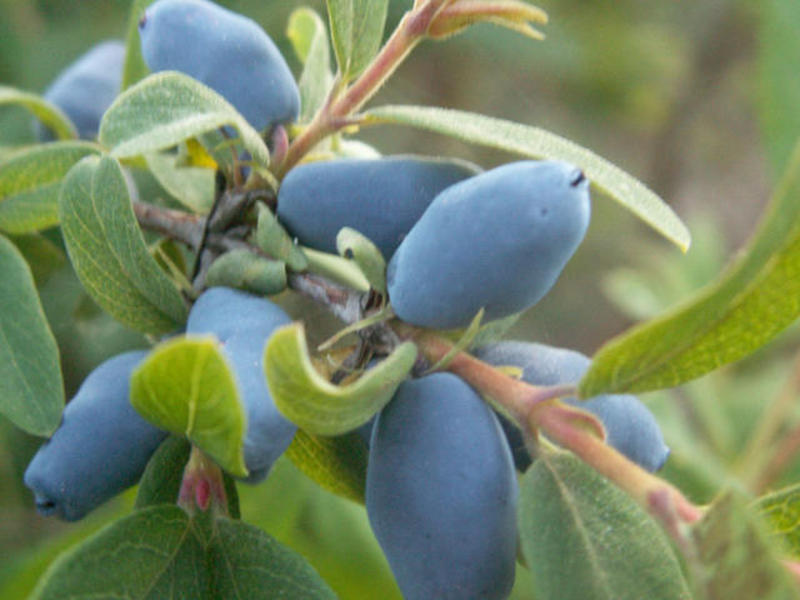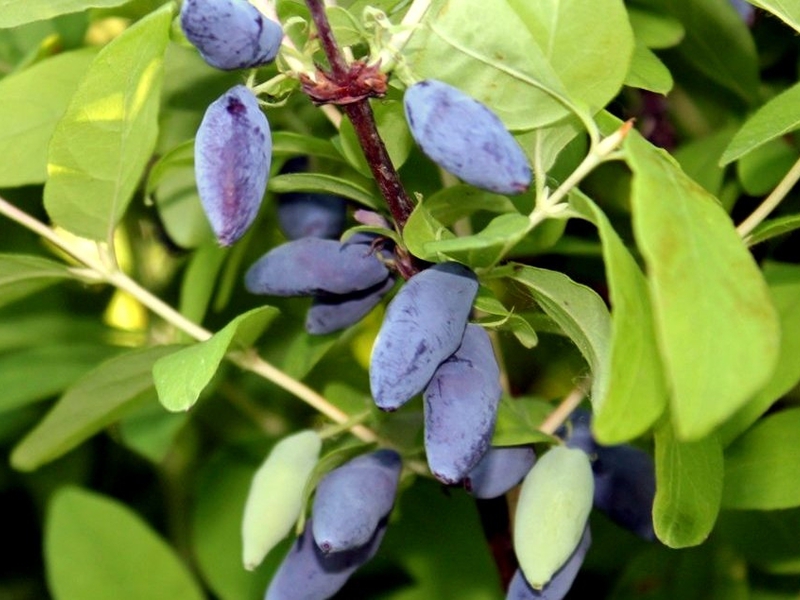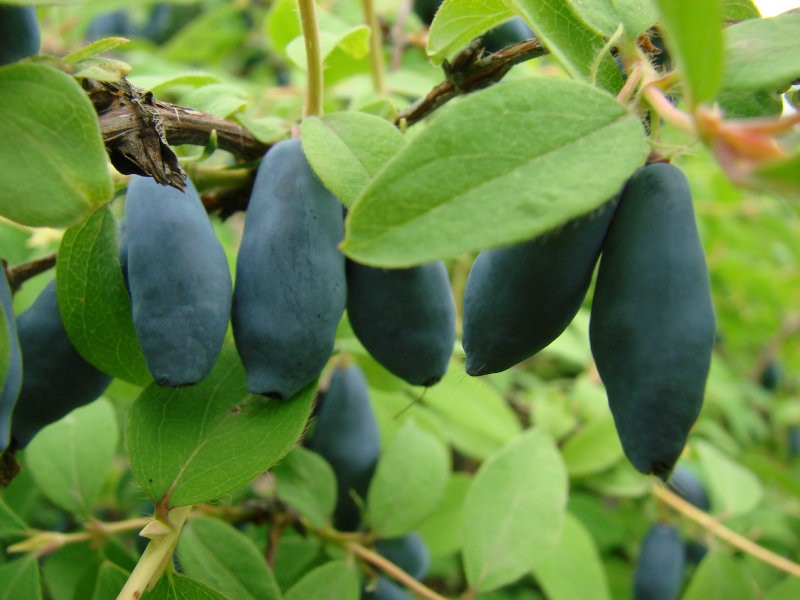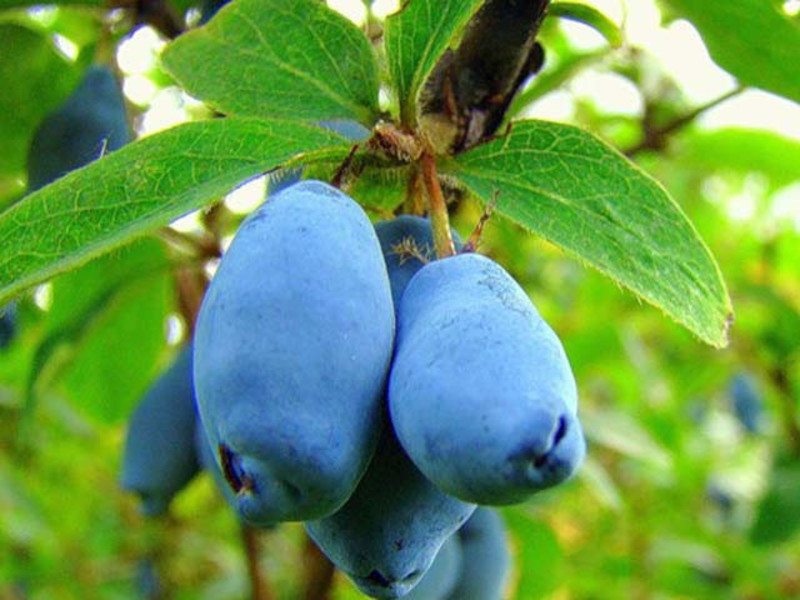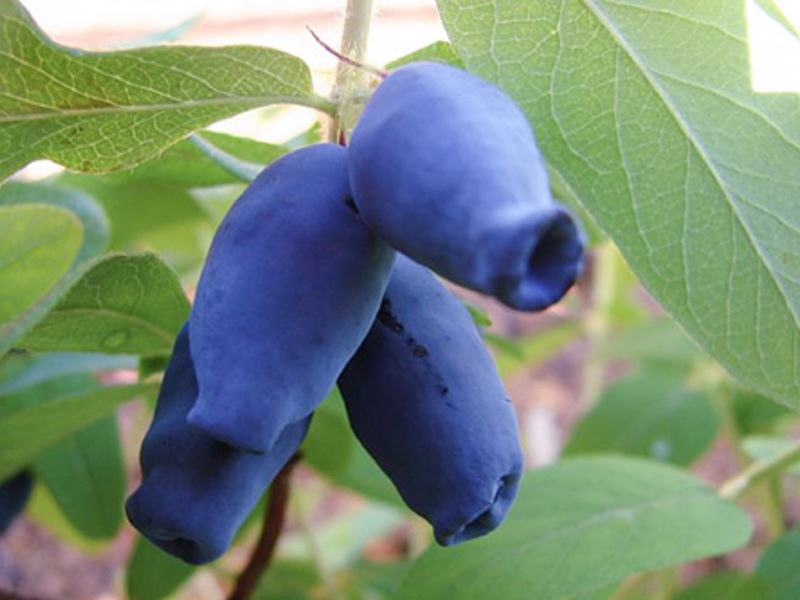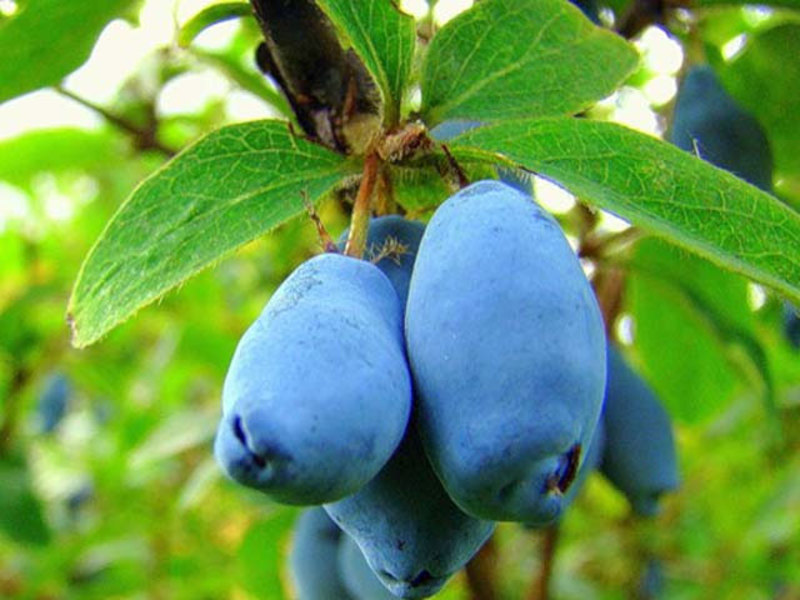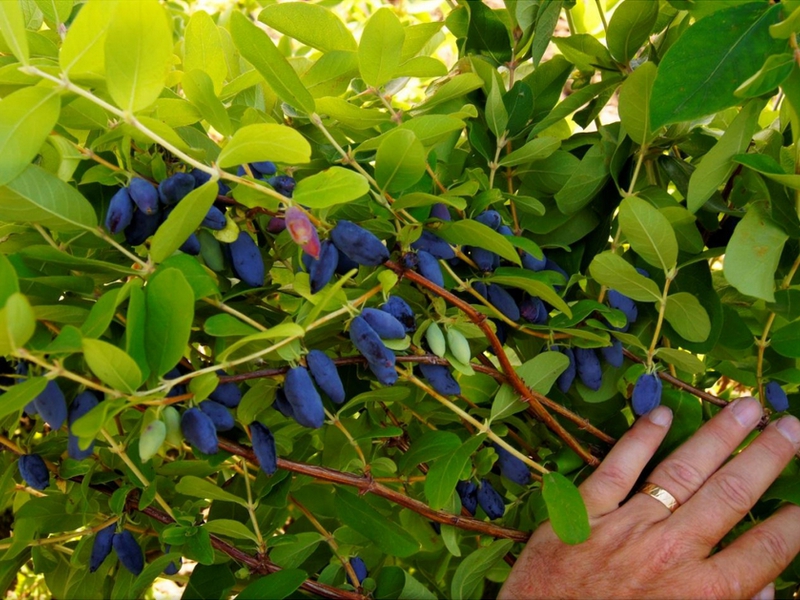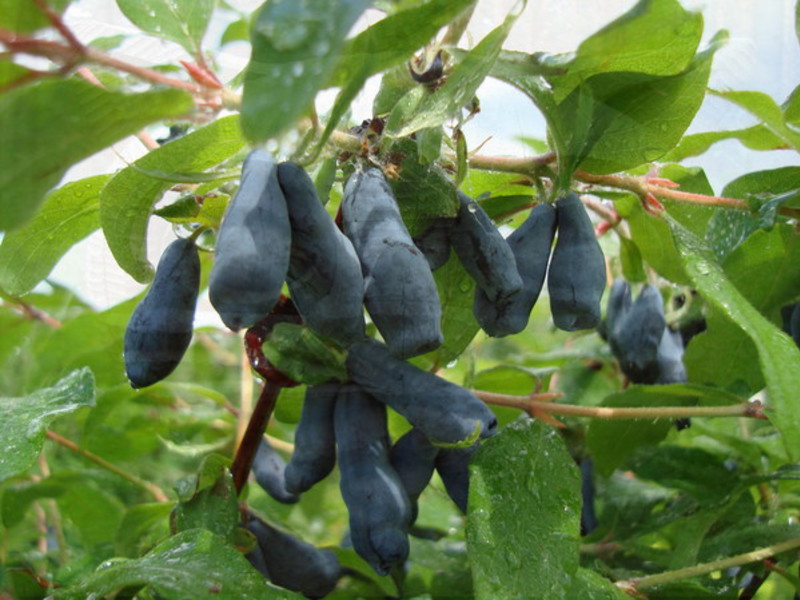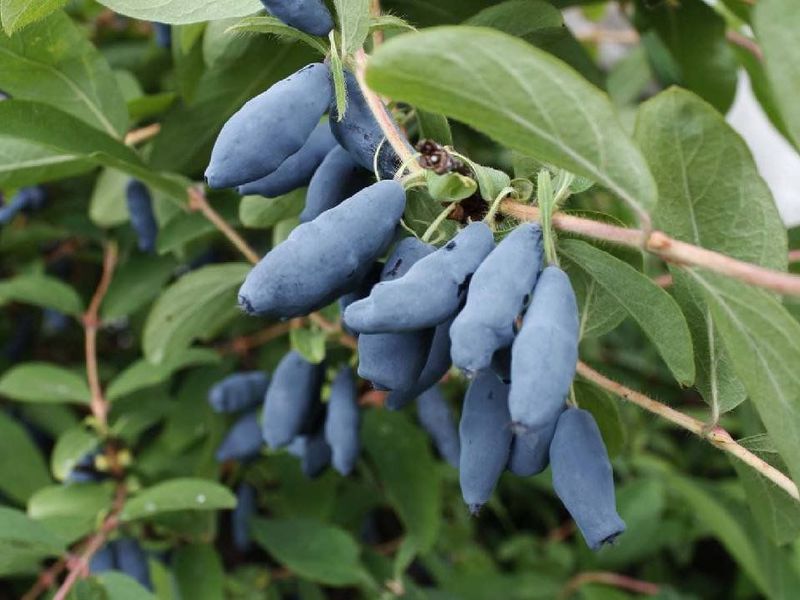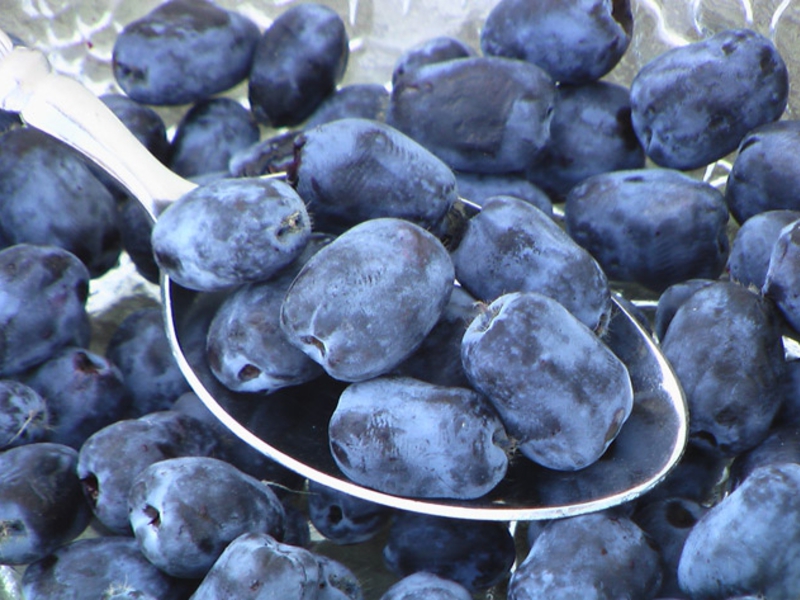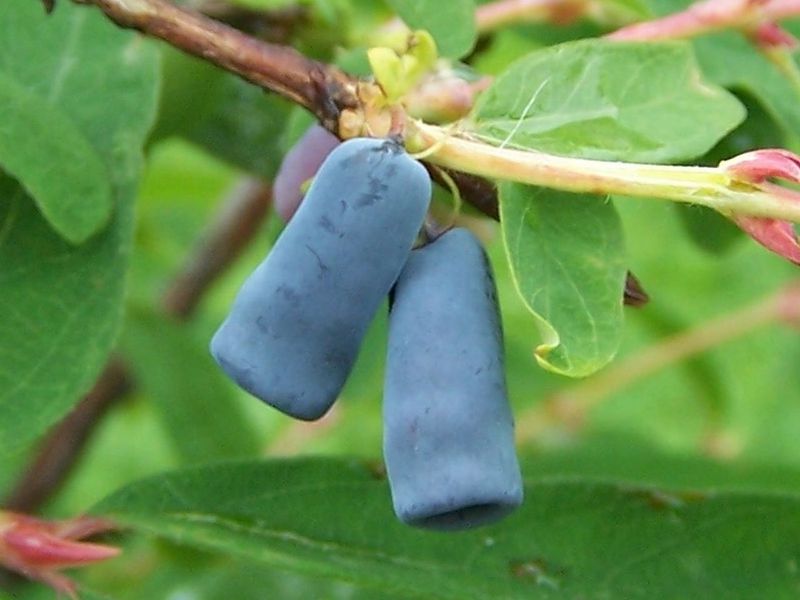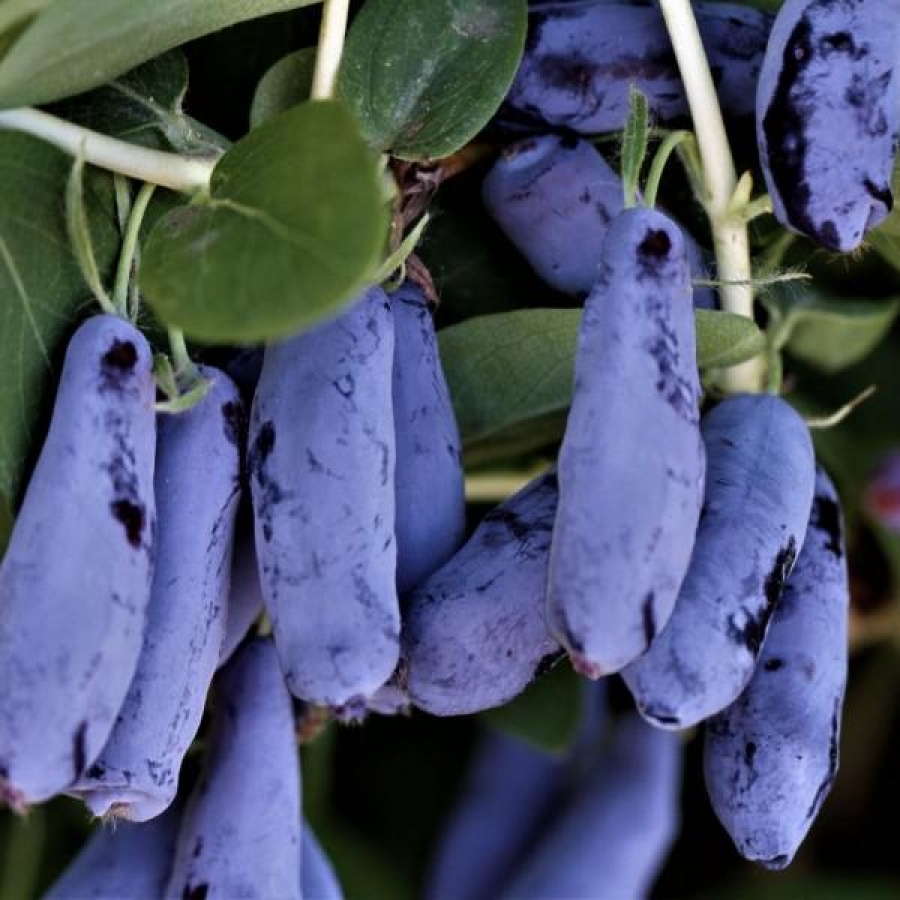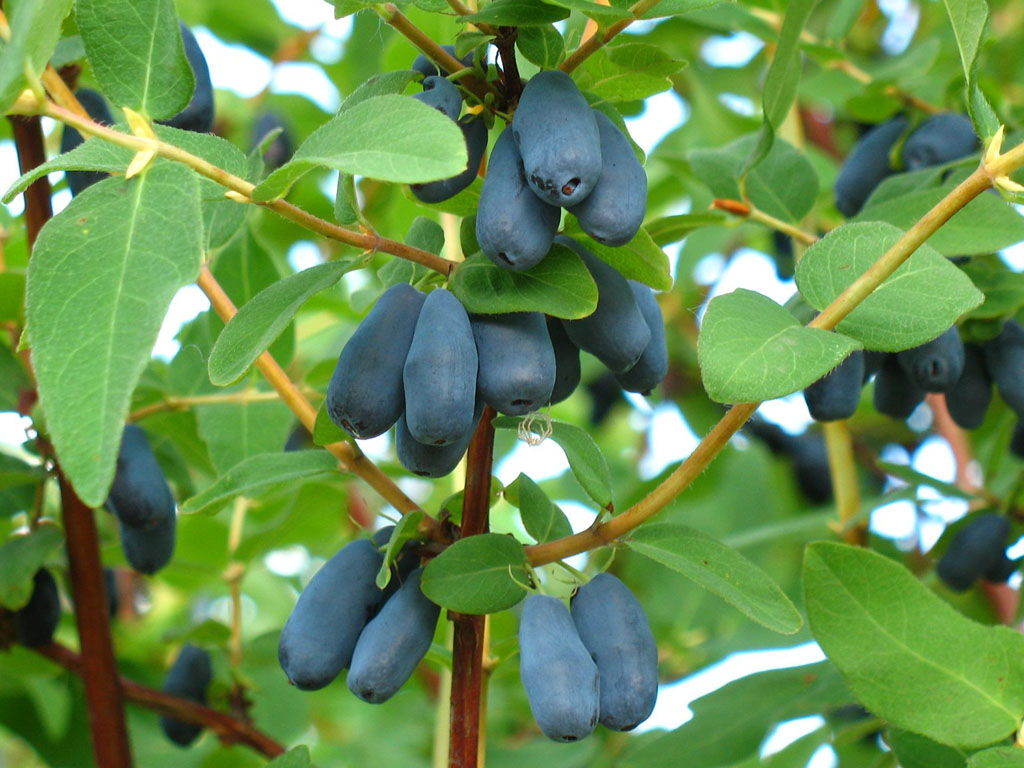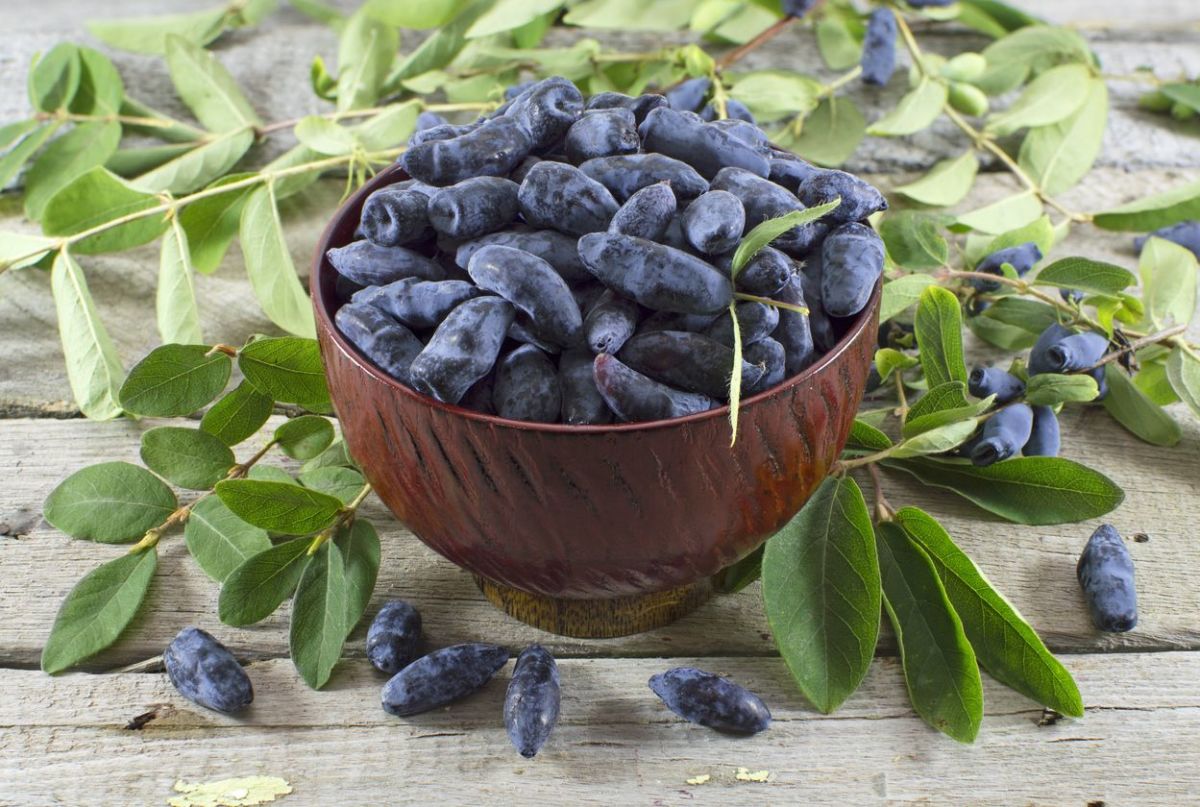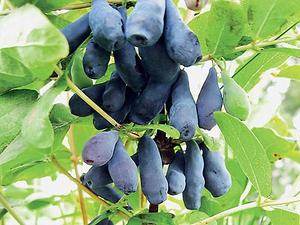 Honeysuckle has amazing healing properties. This berry confidently expands its habitat every year. Farmers and gardeners love it. A small shrub found in breeders' gardens. In addition, breeding institutes continue to delight with new bred varieties that take root well in any region.
Honeysuckle has amazing healing properties. This berry confidently expands its habitat every year. Farmers and gardeners love it. A small shrub found in breeders' gardens. In addition, breeding institutes continue to delight with new bred varieties that take root well in any region.
Berry advantage
wild berry has a number of undeniable advantages:
- Excellent winter hardiness. For most varieties, temperatures of 50 degrees below zero are not a threat. Even if plants have been affected by frost, they tend to recover quickly. Moreover, they delight with tasty and aromatic fruits, while other shrubs lose almost all of their harvest.
- Duration of fruiting. This is one of the most fertile shrubs. The long period of life allows fruit to be produced for 25-30 years.
- The honeysuckle harvest is always in demand in any market. Even from the smallest piece of land, many berries can be picked.
- Honeysuckle fruits ripen very quickly. Honeysuckle is a fast-growing culture. Some varieties can please with fruits in the first year after transplanting.
- The fruits can be picked at a time when strawberries and raspberries are just beginning to bloom.
Honeysuckle is available for any summer resident. Almost all varieties are very resistant to pests and many diseases... Doesn't require any special care. There is no need to treat the shrub with various chemicals. The fruits can be eaten even by young children.
Most popular varieties
Long-fruited honeysuckle
A variety with an unusual name is characterized by:
- the bush does not grow very quickly;
- honeysuckle branches are thin, spreading, have weak purple shoots;
- blue berries are distinguished by their elongated shape and have a bright refreshing taste.
The shrub begins to bear fruit early. The harvest ripens in mid-May... This variety is appreciated for its good winter cold resistance. He is not affected by such a disease as powdery mildew... Can be planted in partial shade, soil of various composition. It is also characteristic that the fruits do not crumble, unlike other varieties.
Honeysuckle berel
Description of the variety
According to the degree of ripeness of the crop, it belongs to medium-late varieties. Has a number of the following characteristics:
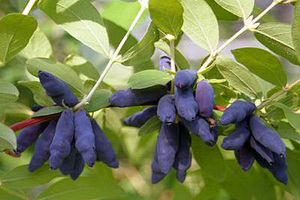 the shrub is tall for its usual growth, has an oval crown;
the shrub is tall for its usual growth, has an oval crown;- leaves are dark green, round oval;
- edible fruits of a deep blue color, weighing almost 1 g;
- berries remain on the bush for a long time until harvest;
- fruits have a sweet and sour taste, have a slight bitterness;
- about 3 kg of crop can be harvested from one shrub;
- gardeners choose for good resistance to frost and pests;
- from the harvested berries, you can cook jam, close compotes for the winter;
- in addition to fruits, the shrub takes part in the landscaping of the garden plot.
Berel better to plant in autumn or early spring.
Honeysuckle bluebird
On the Internet, you can often find a photo of this variety, and this is no coincidence. Due to its high yield and excellent winter hardiness, it is very popular among honeysuckle lovers. Sellers often deceive buyers and sell a completely different variety under the guise of a bluebird. To avoid incident, it is better to read the description.
What are features of the blue bird variety:
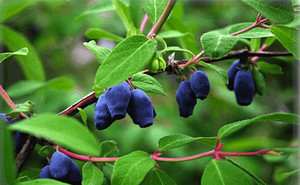 Surprisingly, early fruit ripening.
Surprisingly, early fruit ripening.- The bush is almost never affected by pests. The variety is not susceptible to various diseases.
- The fruits practically do not crumble.
- Requires pollinators.
- Shoots are omitted, and the shape of the bush is not very spreading.
The color of the berries is black with a slight blue tint. The shape of the fruit is oval. They are not only sweet in taste, but also have a delicate and pleasant aroma. But the variety requires a special place in the garden. The post office must contain all the necessary components for good growth and fruit ripening. The place must be sunny and protected from the wind. Drainage system soil will provide the bush with a good harvest. If there is not enough moisture, then the bluebird begins to shed its fruits. Therefore, in especially hot weather, you should think about additional watering of this variety.
Honeysuckle gourmet
Photo of honeysuckle confirms the fact of good fruiting. In addition, it is an early fruitful variety.
Characteristics of the variety:
- bush of medium height, compact size;
- the characteristic shape of the crown is oval;
- the leaves are also oval, bright green, densely located on the shoots to each other;
- berries are juicy, dense, sweet and sour without bitterness;
- average shedding of fruits;
- good yield - from 2 to 3 kg per bush;
- honeysuckle of this variety is not afraid of frosts and diseases;
- fruits can be eaten fresh or processed for further use;
- bushes play the role of a hedge on the site.
Honeysuckle sorceress
The honeysuckle variety is characterized by an early ripening period. The berries are very large, dessert-like in taste, refreshing well. The skin is thin, almost not felt. The berries themselves, as a result of ripening, begin to crumble to the ground. The variety tolerates drought well, so it can be safely planted in a region with a hot climate. Bush has compact dimensions, grows poorly. Reaches a height of 1.5 m. Shoots are thin and drooping. The dark green leaves are oval in shape and can be damaged by aphids and all sorts of sucking insects. Typically, this variety is grown for processing. Honeysuckle looks great with roses and hazel bushes in the garden.
The benefits of honeysuckle for humans
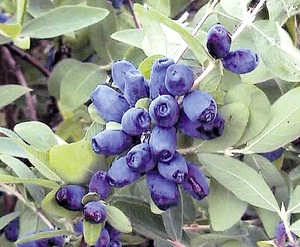 Honeysuckle is appreciated for the unique taste of the fruit. Each variety has a different flavor. Some have a piquant bitterness, others are very juicy, others without bitterness.
Honeysuckle is appreciated for the unique taste of the fruit. Each variety has a different flavor. Some have a piquant bitterness, others are very juicy, others without bitterness.- Honeysuckle fruits ripen earlier than all others, from mid-May to early June. But to date, breeders have managed to develop varieties that continue to bear fruit until the end of summer. Good care at the same time lies in the timely harvest.
- The fruits are suitable for fresh consumption. They can be frozen for the winter, dried. Cover compotes, juices, preserves, marmalades and jam. Some gourmets try to make a good wine from the berries, which is not inferior in taste to the classic grape wine.
- Any variety of honeysuckle is characterized by durability. The plant is unpretentious to care for. Cases of fruiting from 10 to 60 years have been recorded. The frost resistance of honeysuckle is a guarantee that the shrub will not die at a temperature of 50 degrees below zero.
Average honeysuckle begins to bear fruit at the age of 3 years... From one bush of honeysuckle, you can collect about 3 kg of berries.
Probably the only drawback of honeysuckle is that, as a result of ripening, the berries immediately begin to fall off. Their skin is very thin, so it bursts when it hits the ground. The berry is damaged. But even from a minus, you can easily make a plus. If you keep an eye on the shrubbery and harvest on time, everything will be fine.
